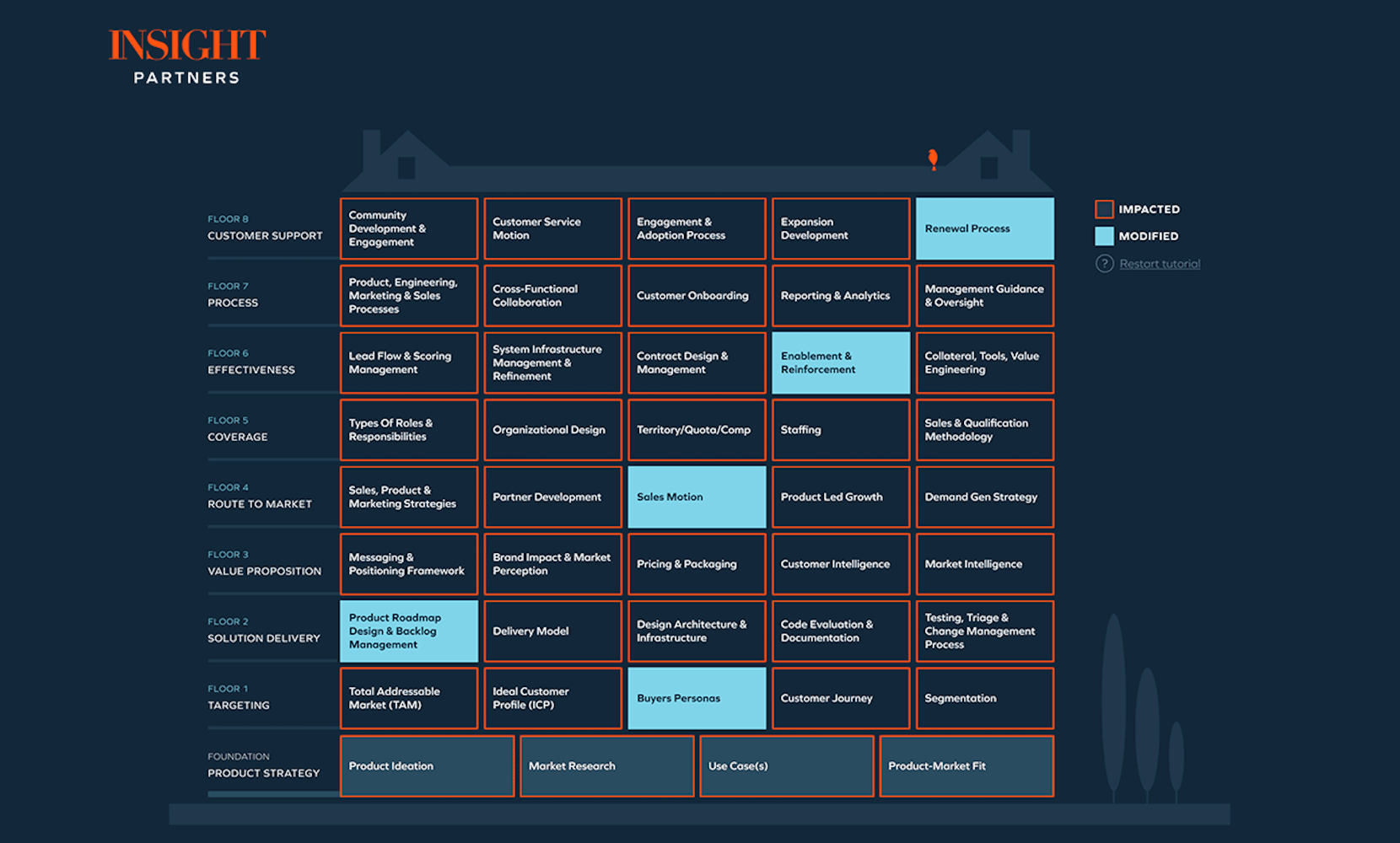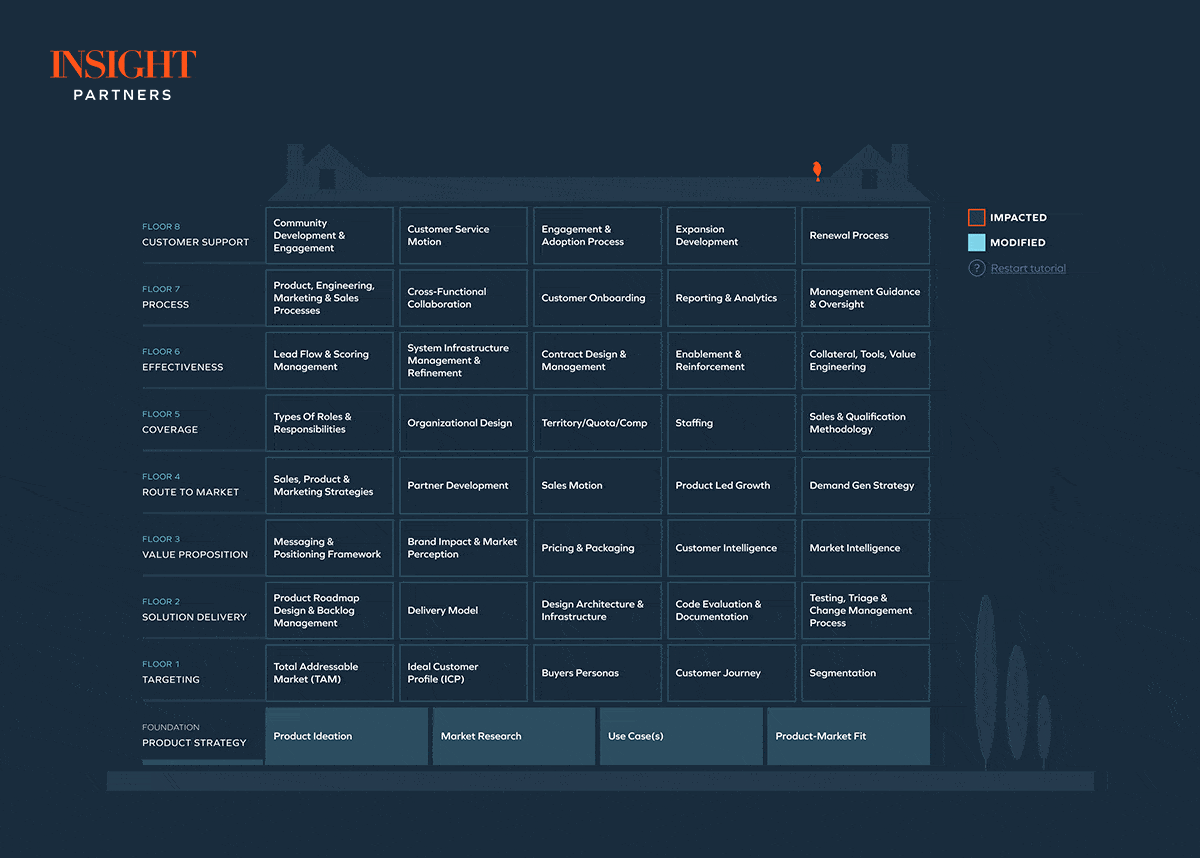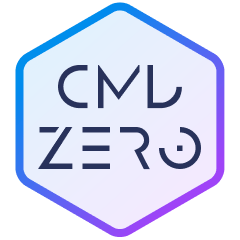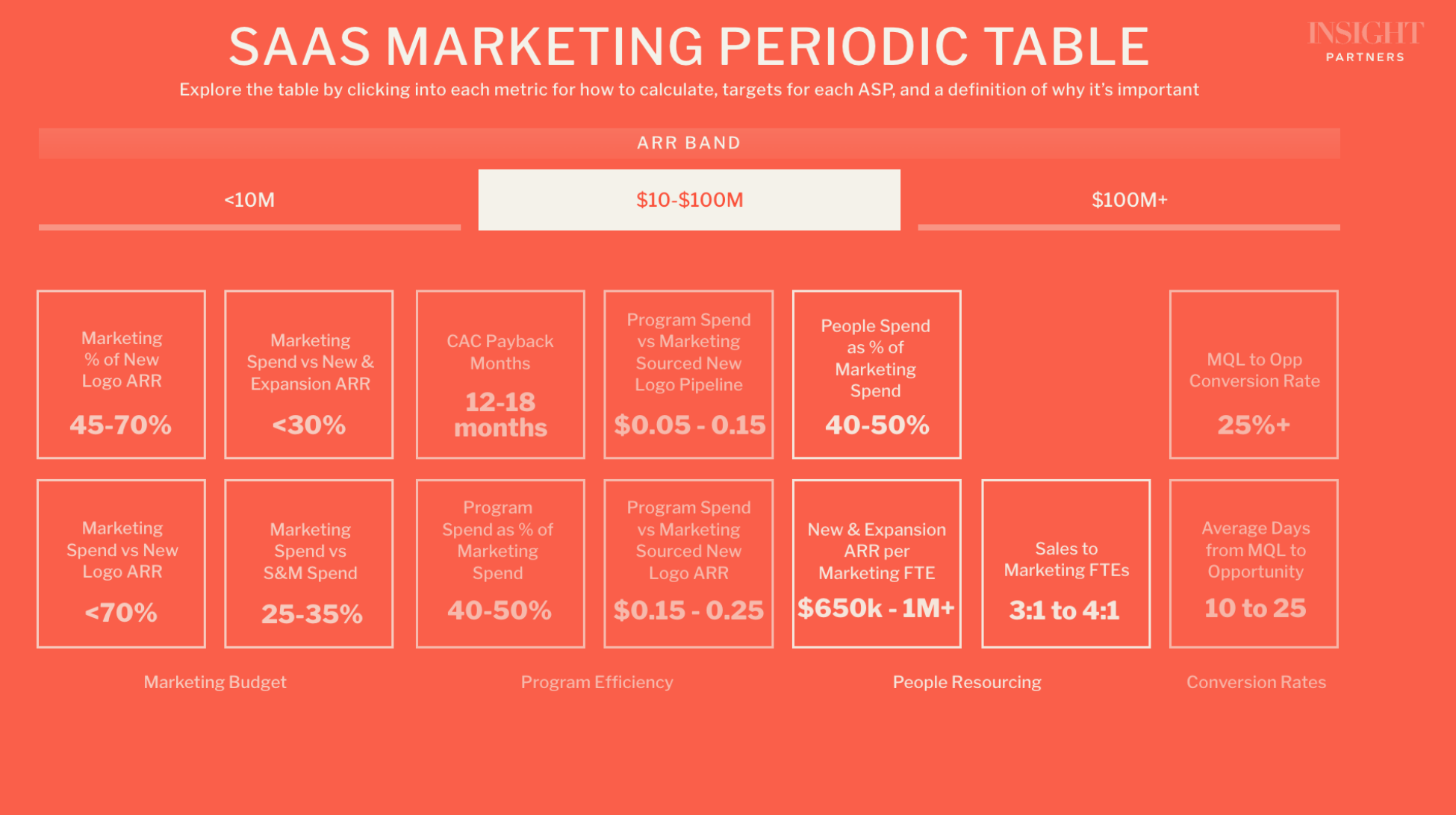[ScaleUp Blueprint] How to navigate mergers and acquisitions to scale your SaaS business

Numerous studies say more than half of acquisitions fail to deliver the value creation that was expected at acquisition.
Considering the deeper implications of these critical business decisions is why we introduced Insight’s proprietary SaaS Growth Acceleration Framework last fall as a comprehensive blueprint for go-to-market (GTM) success. We’ve now expanded this interactive framework so SaaS leaders ($10M+ ARR) can use this framework to:
- Understand the downstream implications of 40+ critical business decisions
- View how product-related decisions can shake the foundation of your go-to-market strategy
- Dig deeper into any GTM component to view key questions you should be asking when making changes
This series of three articles accompanies our new interactive framework and illustrates the real-life use cases of some of the most commonly encountered “seismic events” leaders ask our advisory group. These are critical events in any ScaleUp’s journey that shake the foundation and fall outside of the typical business blueprint for growth:
- Entering a new market or segment
- Navigating mergers and acquisitions
- Launching a new product
Below, let’s explore the critical business decisions for navigating mergers and acquisitions (M&A) to scale your SaaS company.

Seismic shift: Navigating mergers and acquisitions
At Insight, we partner closely with our portfolio companies to help them integrate their acquisitions and accelerate value. Through dozens of engagements, we have found that five elements of the Growth Acceleration Framework often trip up companies during this critical shift:
- Buyer Persona
- Product Roadmap and Backlog Management
- Sales Motion
- Enablement and reinforcement
- Renewal Process
We’ll cover each element below and offer advice on how to consider moving forward.
Buyer Persona
What is it?
Personas are generalized representations of buyers, influencers, and users at your ICP that inform your GTM strategy, messaging, and buyer engagement strategy.
Who is responsible: Product Marketing (owner), Marketing (consulted), and Sales (consulted).
Questions to ask
- Do you know your primary buyer/user pain points?
- Have you researched your buyers/users and defined the following for your personas:
- Role
- Challenges and goals
- Buying triggers
- Perceived barriers
- Have you tested and validated your buyer/user personas?
Our advice
In an acquisition, it’s important to understand the acquirer’s and the acquiree’s respective buyer personas. If those buyers are the same (meaning same level and same function) then cross-sell is simple; you can leverage relationships that exist in either company to sell the other company’s products. But if the buyers differ (say, one sells to developers and the other to CIOs) the potential for cross-sell in the short term is greatly diminished. Clearly mapping out the buyer personas helps identify the needs for product changes, enablement, and adjustments to demand generation.
Product Roadmap and Backlog Management
What is it?
A product roadmap is a strategic document that outlines the overall direction and goals for a product or product line over a specific period of time. It is a high-level plan that provides a framework for product development and helps align product strategy with business objectives.
Who is responsible: Product (owner), Sales (consulted), and Customer Success (consulted).
Questions to ask
- Do you use a roadmap tool?
- Do different functional stakeholders provide input on the roadmap?
- How far out does the roadmap project?
- Do you perform a prioritization process for the roadmap? Do you use a scoring method?
- What are the key items in your backlog that could delay new product development?
Our advice
Typically, when an acquisition occurs, there is an expectation that products will be integrated or that a new, combined product will be created. Those initiatives will require significant effort and development resources. To accomplish this, the company needs to rationalize its two existing product roadmaps, clean up the backlog, remove anything that is no longer relevant — and then decide on its new roadmap. If the company isn’t proactive about this effort, they will end up with resources stretched too thin and arguing with one another over focus areas.
Sales Motion
What is it
The sales process or methodology a company uses to sell its products ensures that it converts leads to customers, increases revenue, and achieves its sales targets.
Who is responsible: Sales (owner), RevOps (consulted).
Questions to ask
- Have you determined whether this product will be sold through a consultative, solution, transactional, or PLG approach?
- Does the sales motion align with the existing sales motion, or is it a new motion?
- Will you leverage an existing sales process, or does this product require a new process?
Our advice
In an acquisition, the sales motion for both companies should be carefully considered. Is the existing motion the most appropriate for this solution set? Many companies will simply continue with the existing motion in the newly acquired company, but there may be an opportunity to deploy a more effective or efficient motion. And you should take the opportunity to reassess your existing sales motion to determine if it is optimal. If you have acquired a company to shift from a transactional feature-driven motion to a consultative platform sale, you will likely need to change your sales motion and reassess your organization over time. Creating a sales motion aligned with your buyer’s purchasing process will allow you to maximize the performance of the newly combined company.
Enablement and Reinforcement
What is it?
Enablement is essential to upskill various teams to represent the product and drive sales adequately.
Who is responsible: RevOps (owner), Sales (consulted).
Questions to ask
- Has custom training been created to address feature/functionality, value proposition, and use cases?
- Have constituent groups (sales, sales engineering, etc.) signed off on the training materials to make sure they meet their needs?
Our advice
For much of the market, your sales and customer success teams are the face of the company. They regularly speak with your prospects and customers and can supercharge your cross-sell efforts. But to be effective, they need to understand how to position the solutions and how adding the new product will benefit the customer base. Additionally, your management team must have the reporting and reinforcement processes in place to guarantee they don’t slip back into the familiar and ignore the new products. Investing in an enablement program and management ensures you achieve your acquisition goals.
Renewal Process
What is it?
The process of renewing contracts or subscriptions for a product or service.
Questions to ask
- What is the term of the product?
- Are customers auto-renewed, or will there be a manual process?
- Has it been determined who will be responsible for renewals of this product?
- Have you developed tactics for renewing contracts and subscriptions?
Our advice
The biggest risk of an acquisition is that the existing customers of either company may question the direction of the new organization and its focus on the elements of the product; that concern may result in higher churn rates than expected and can quickly turn a positive acquisition into a negative one. To mitigate this risk, both companies should structure a tiered list of their customers and engage with direct outreach via sales or CS for their largest customers and those with the most long-term potential and leverage a customer marketing campaign for all others.
The quicker you do this outreach and explain the benefits of the newly combined company, the less likely your competitors will impact the market’s perception of the acquisition; to maintain control of the messaging, you need to move quickly and in a coordinated effort.
Scale up like an expert
Explore the interactive SaaS Growth Acceleration Framework here.








